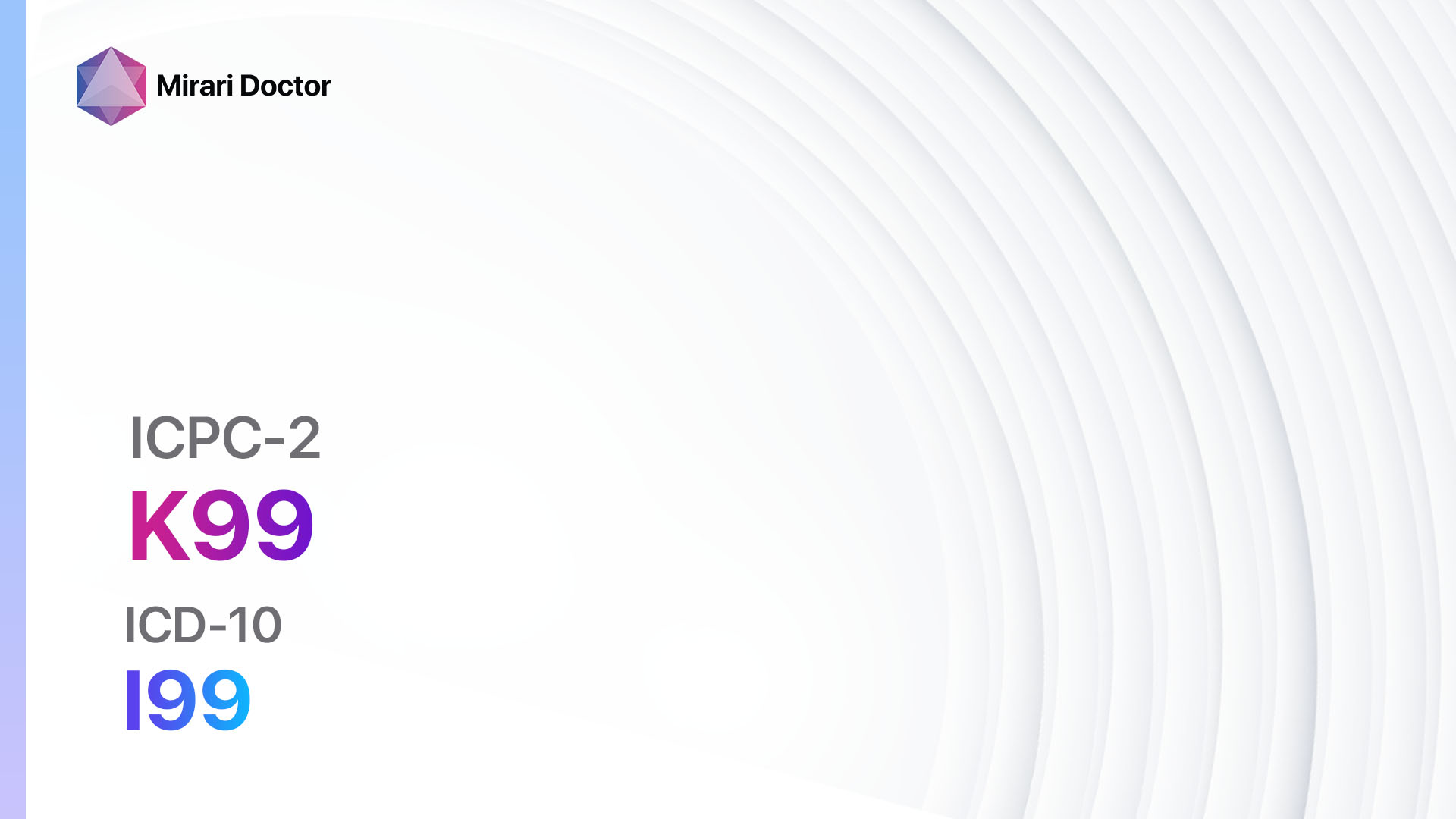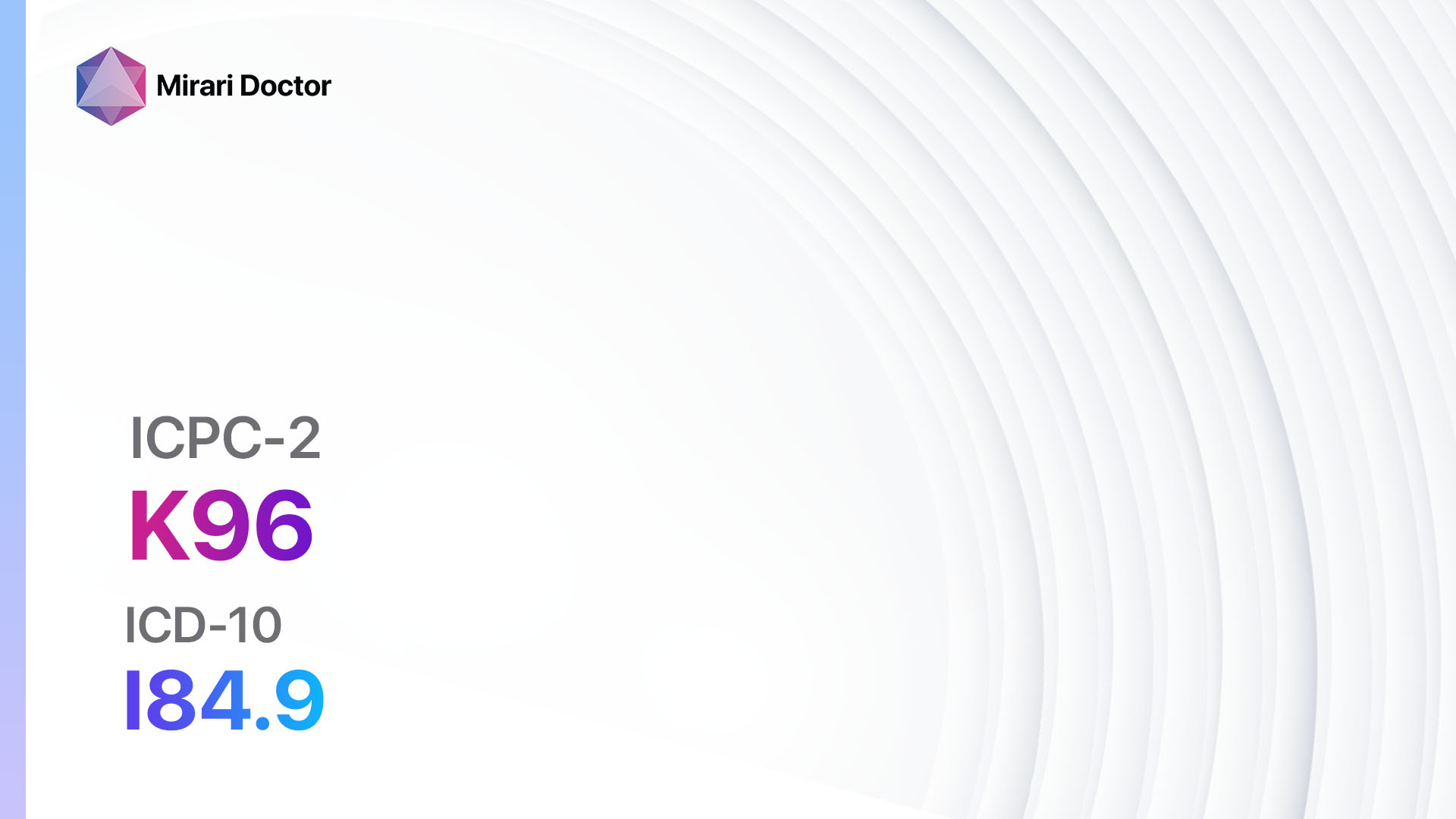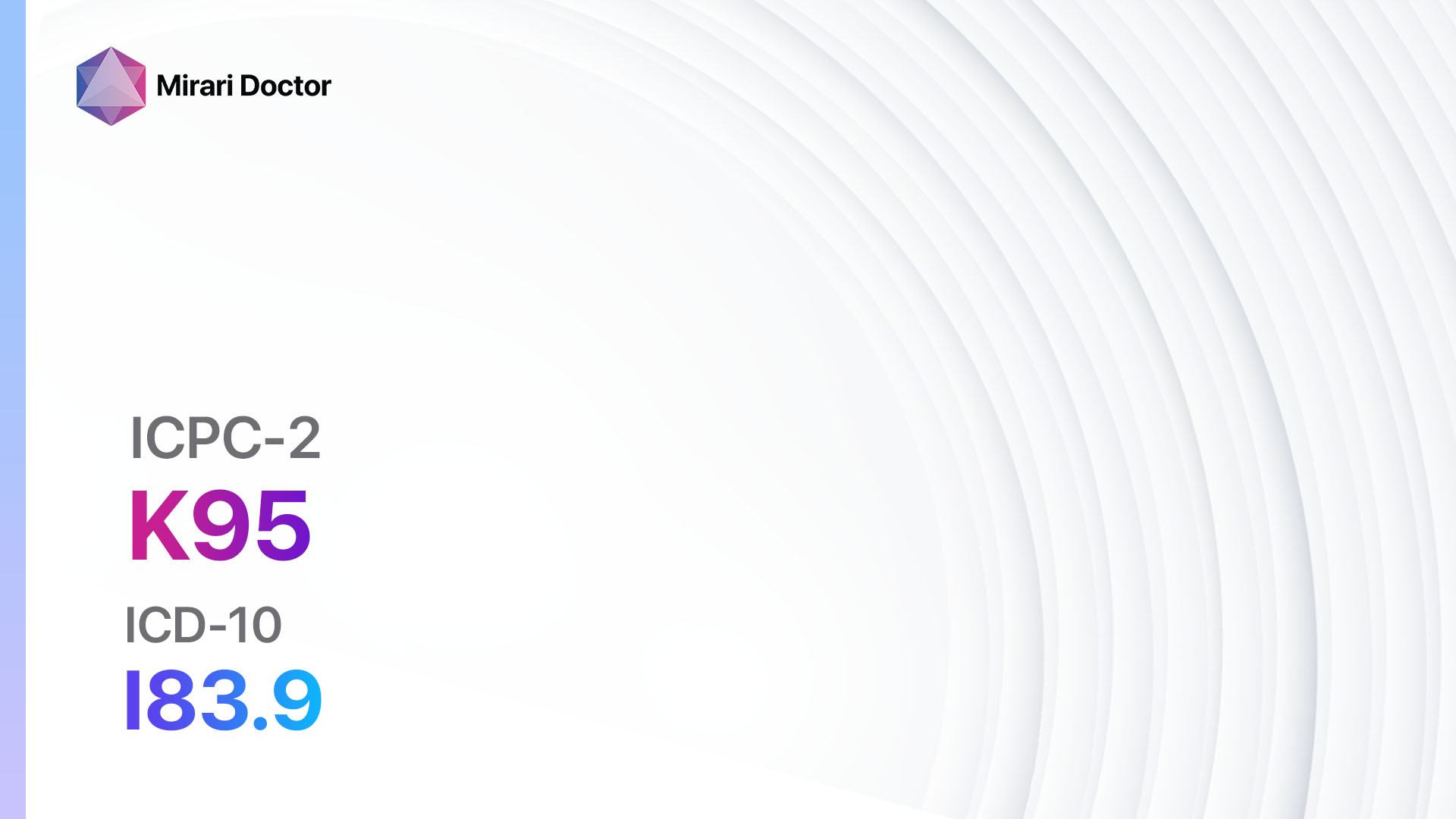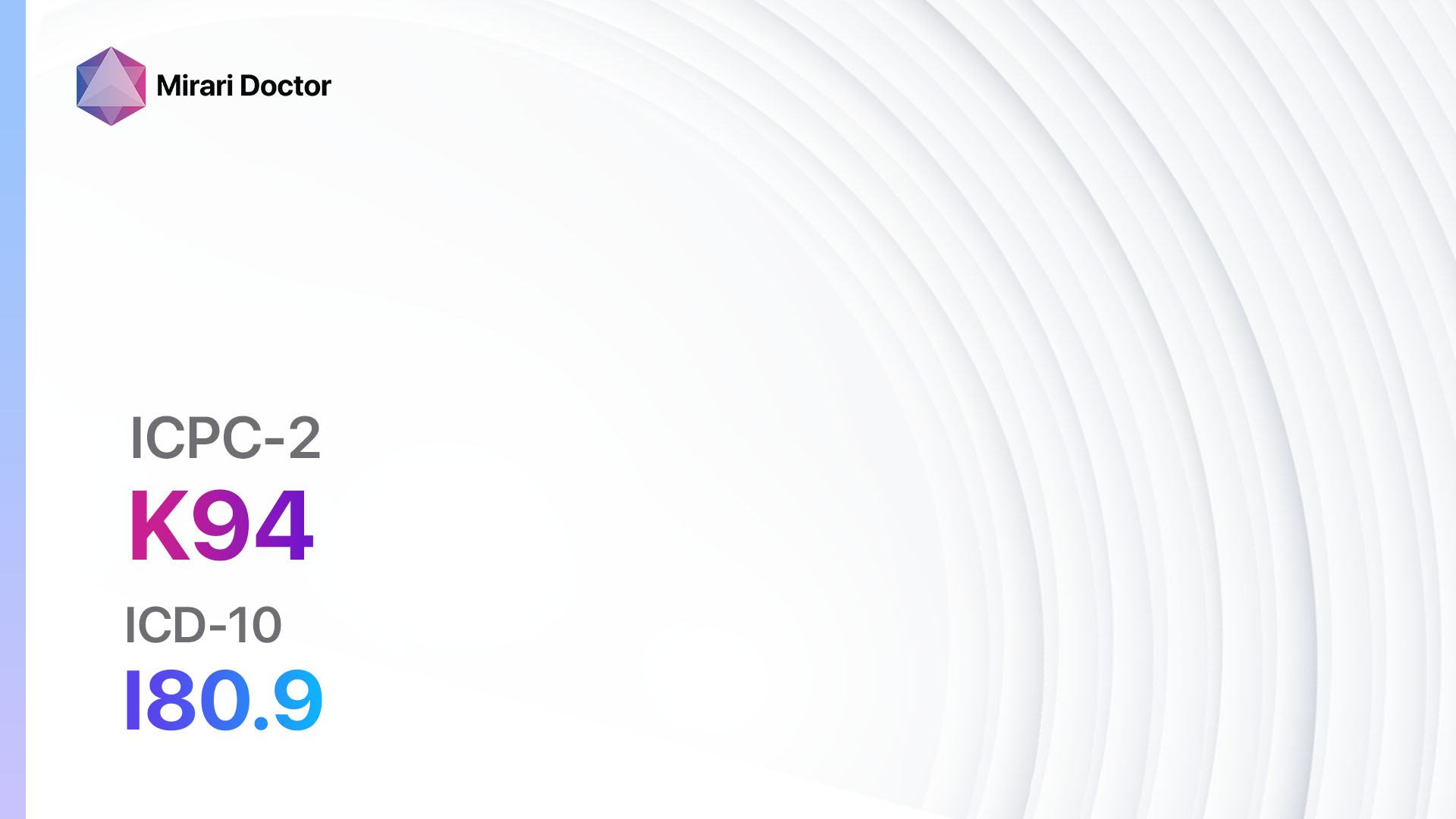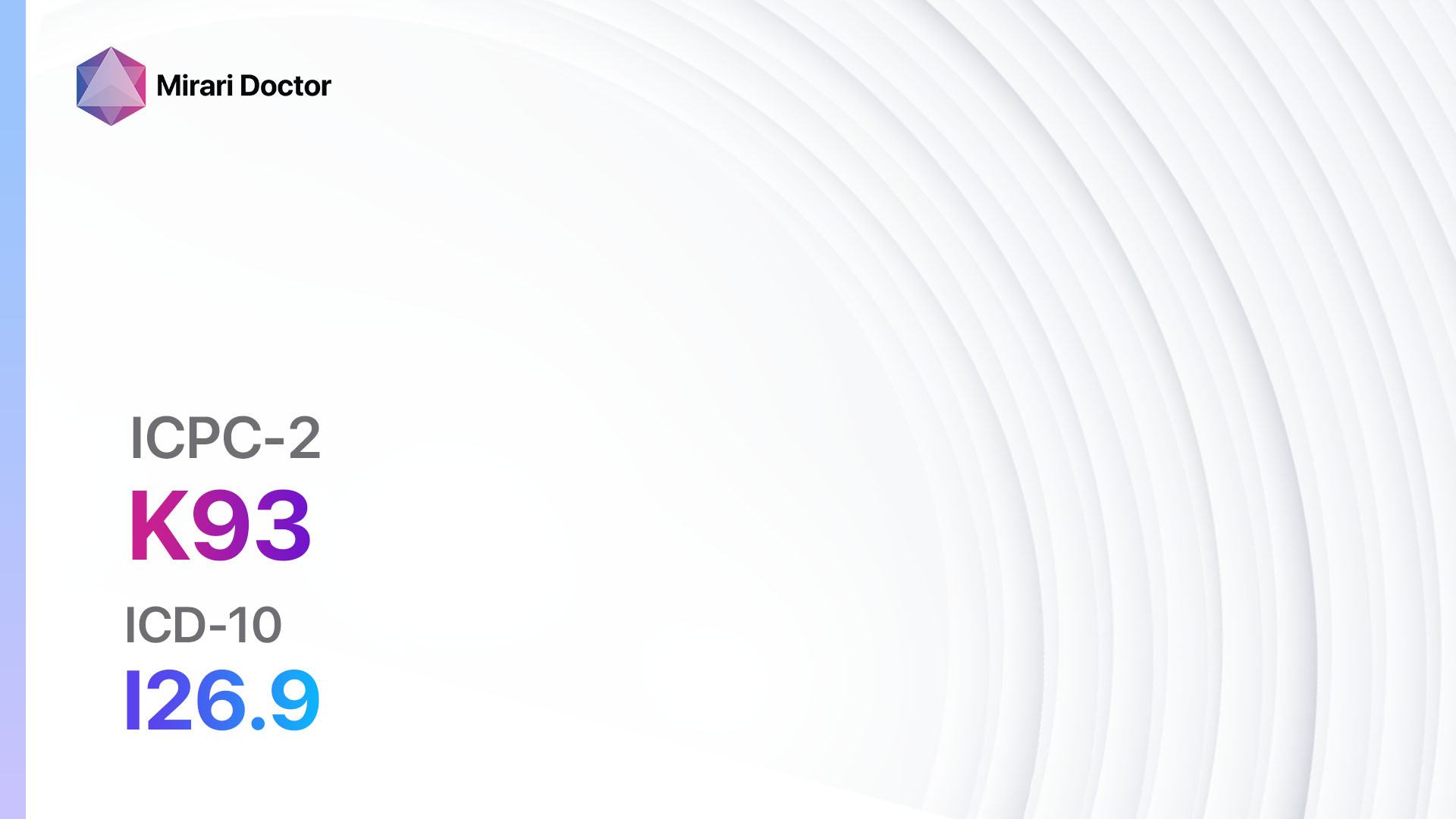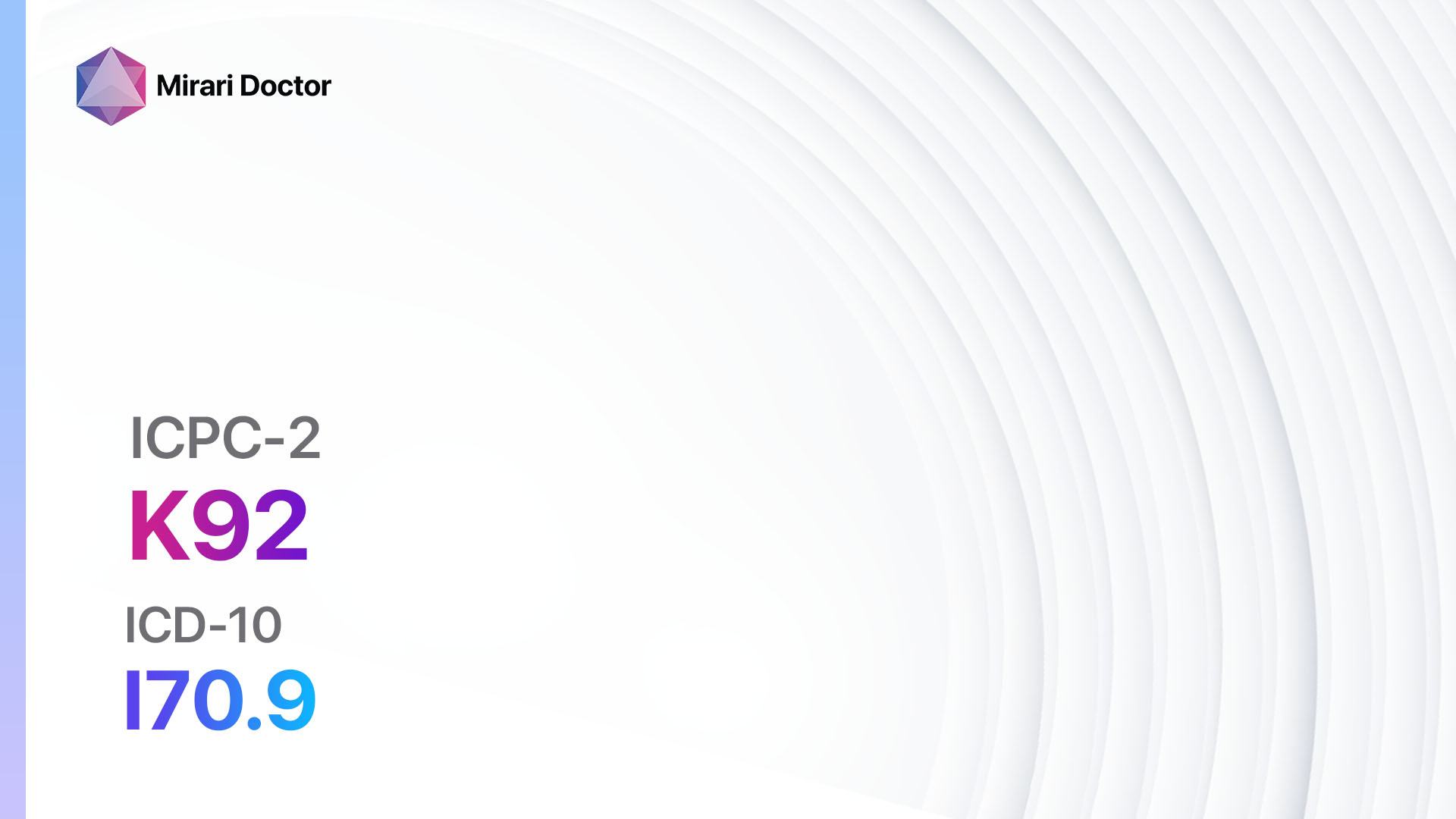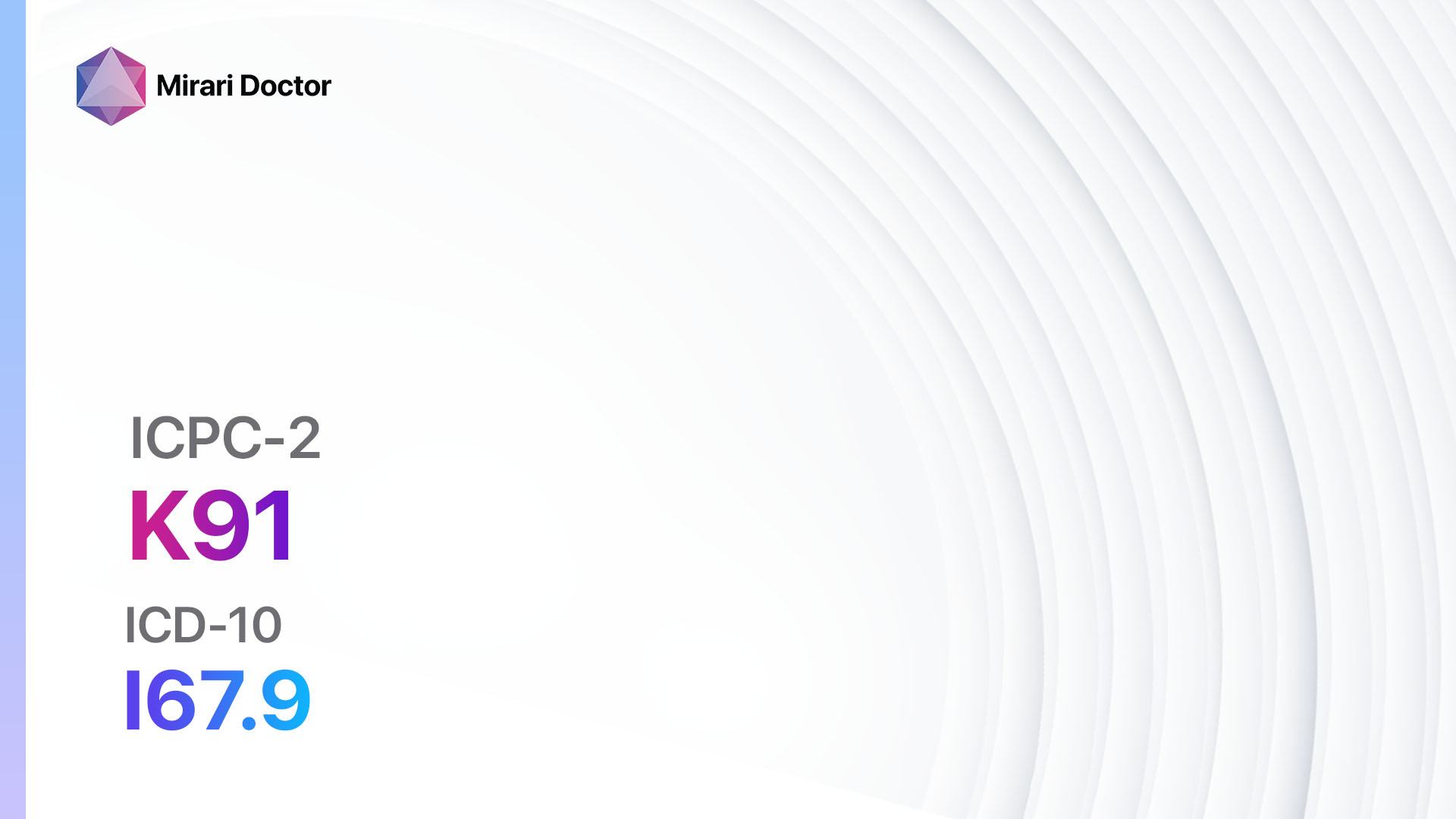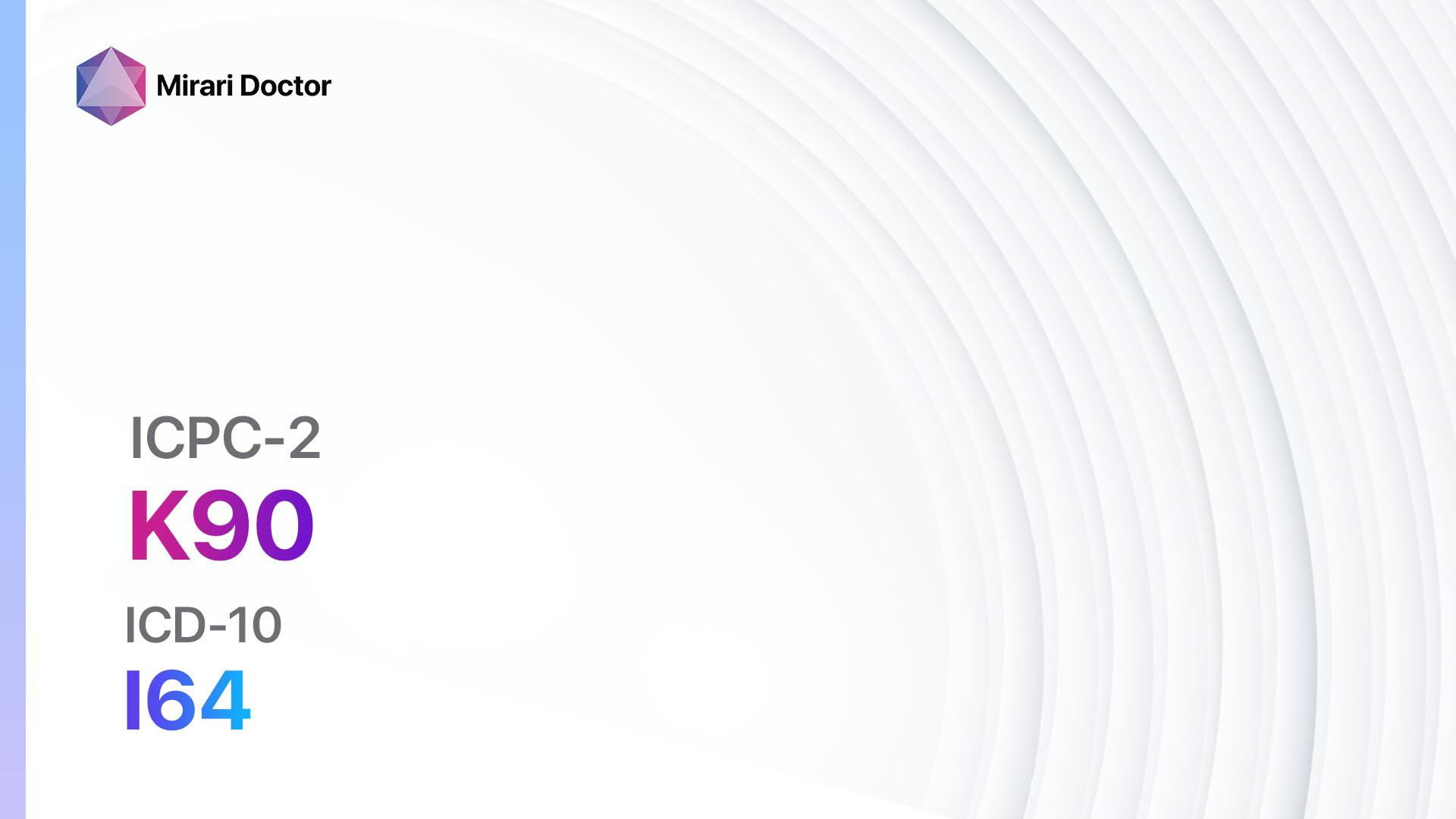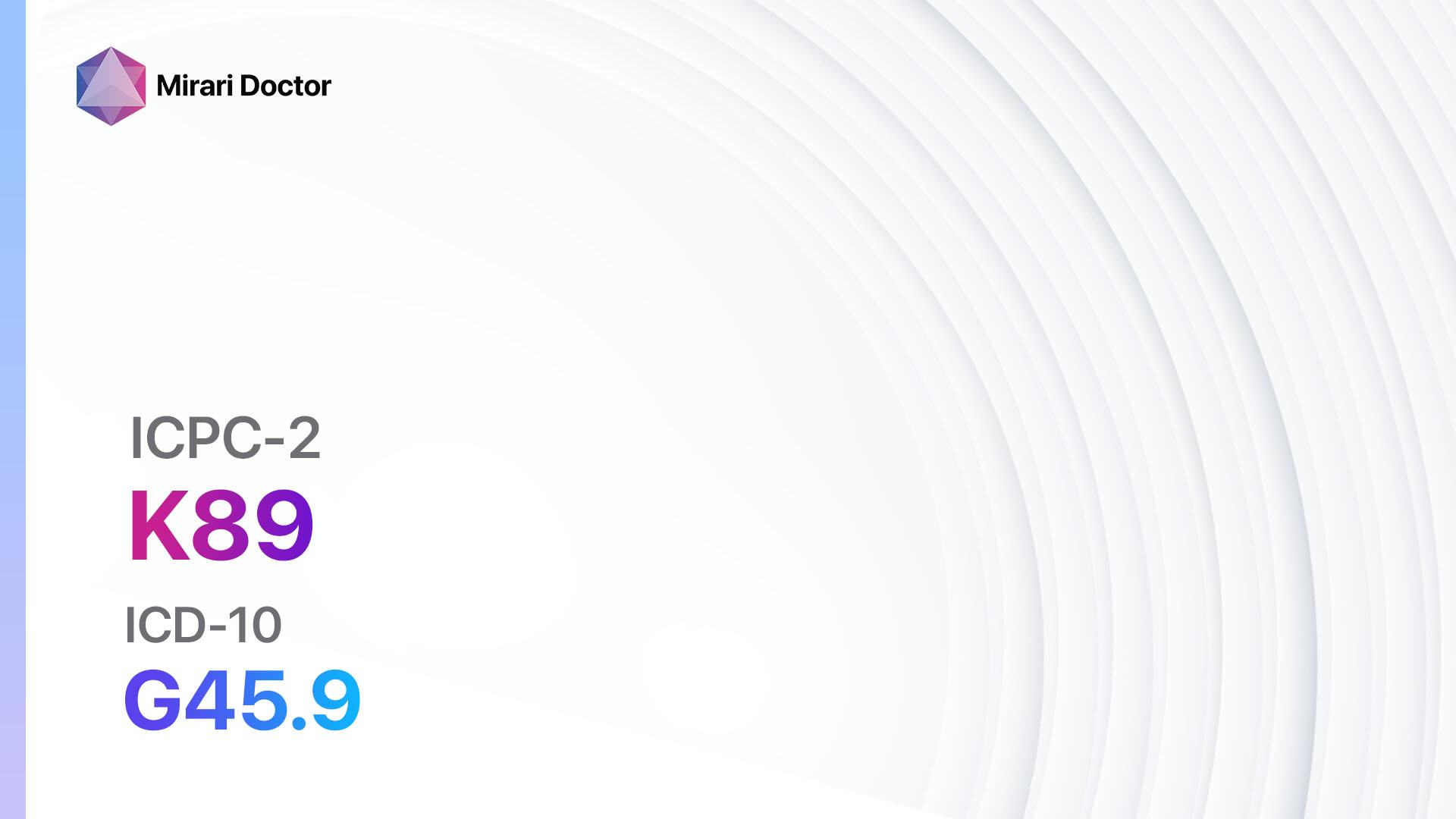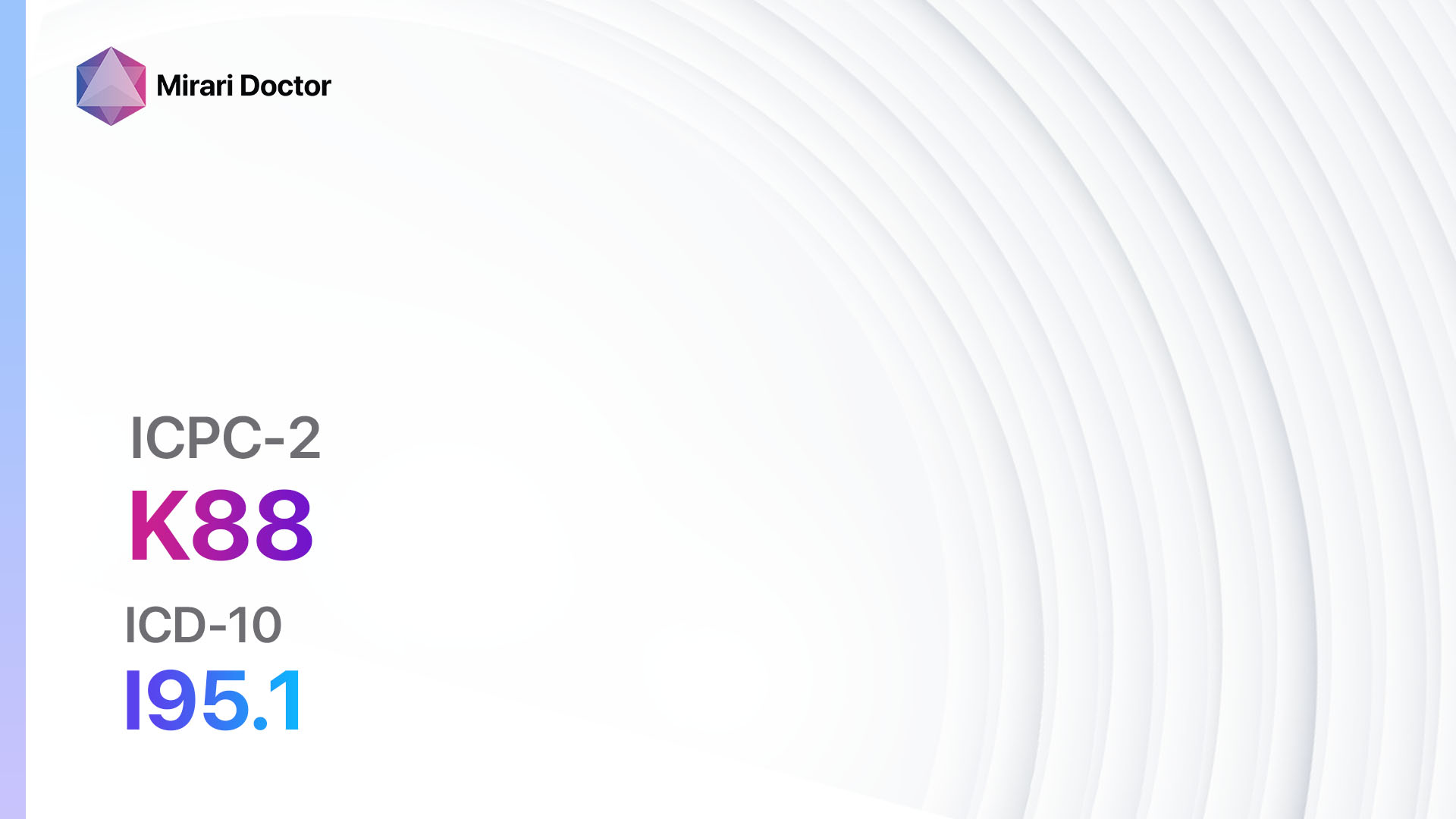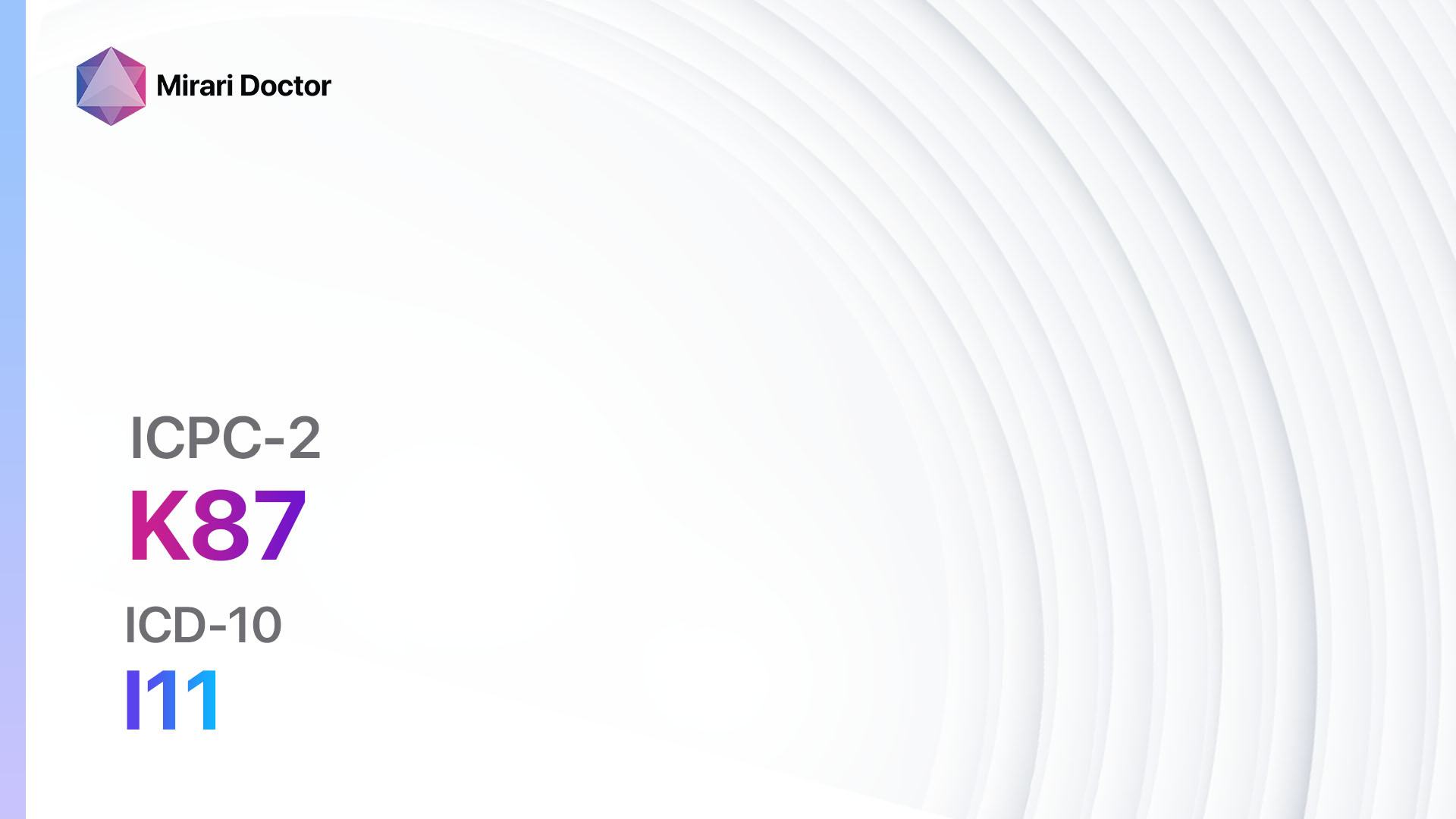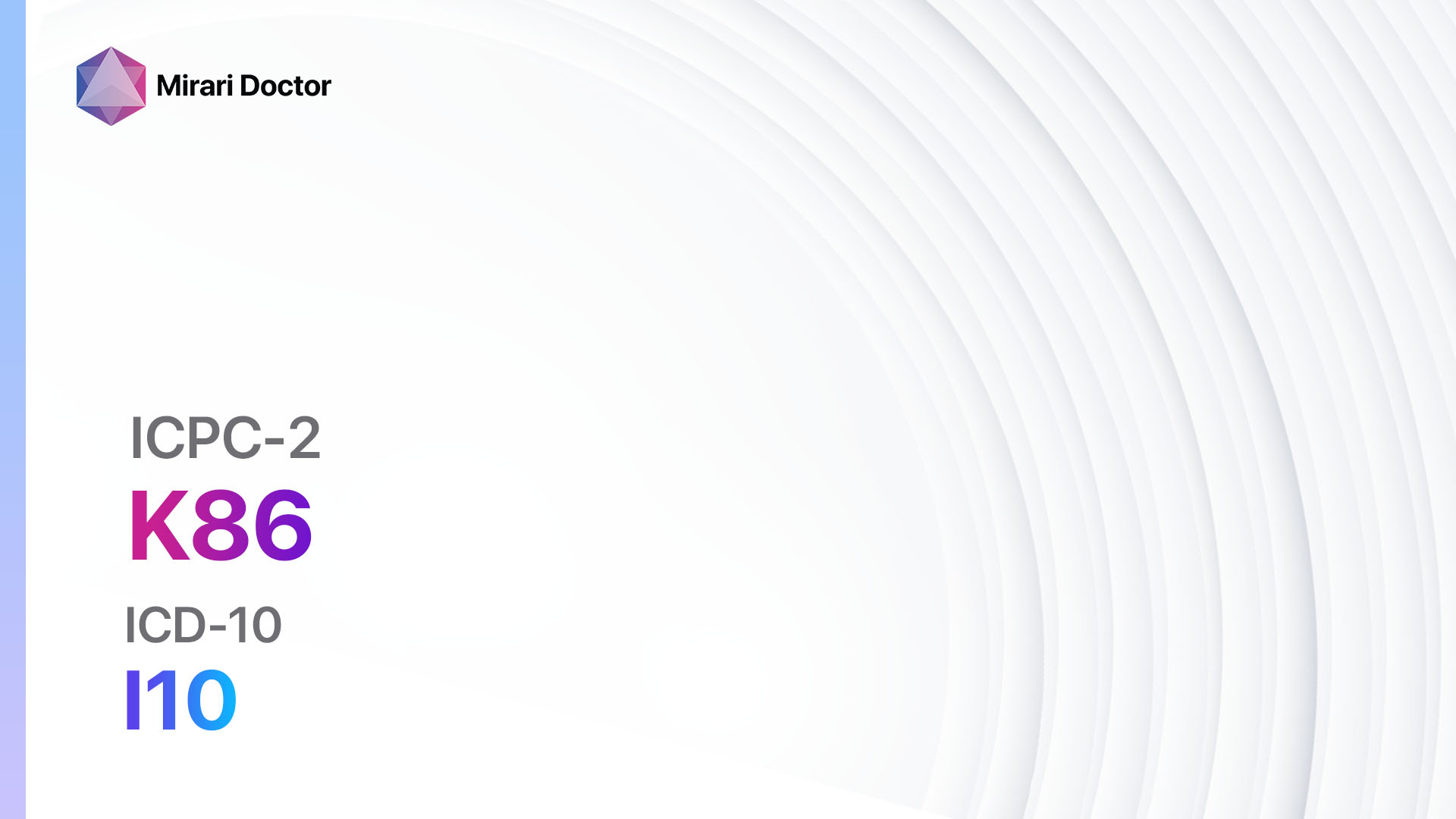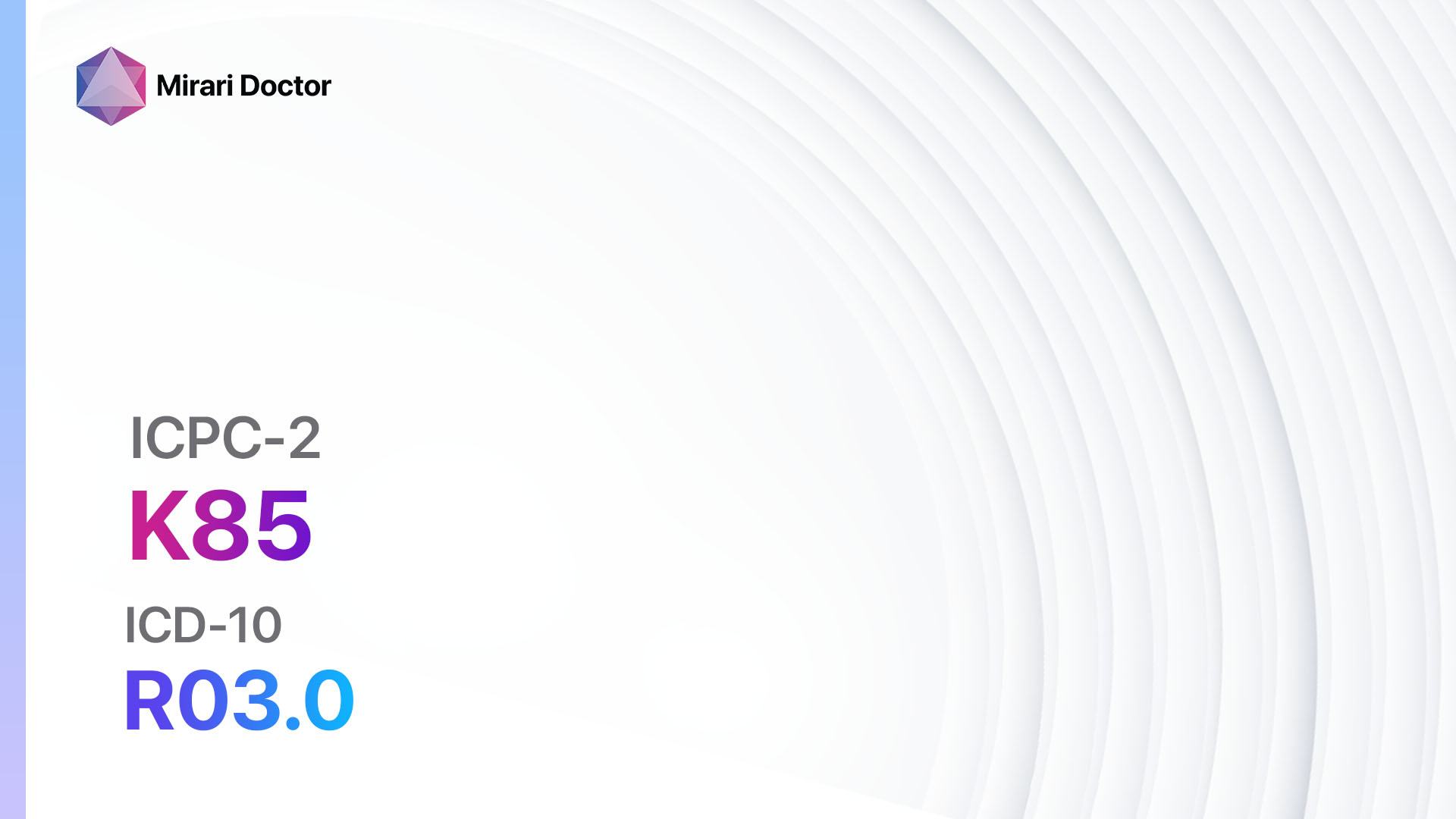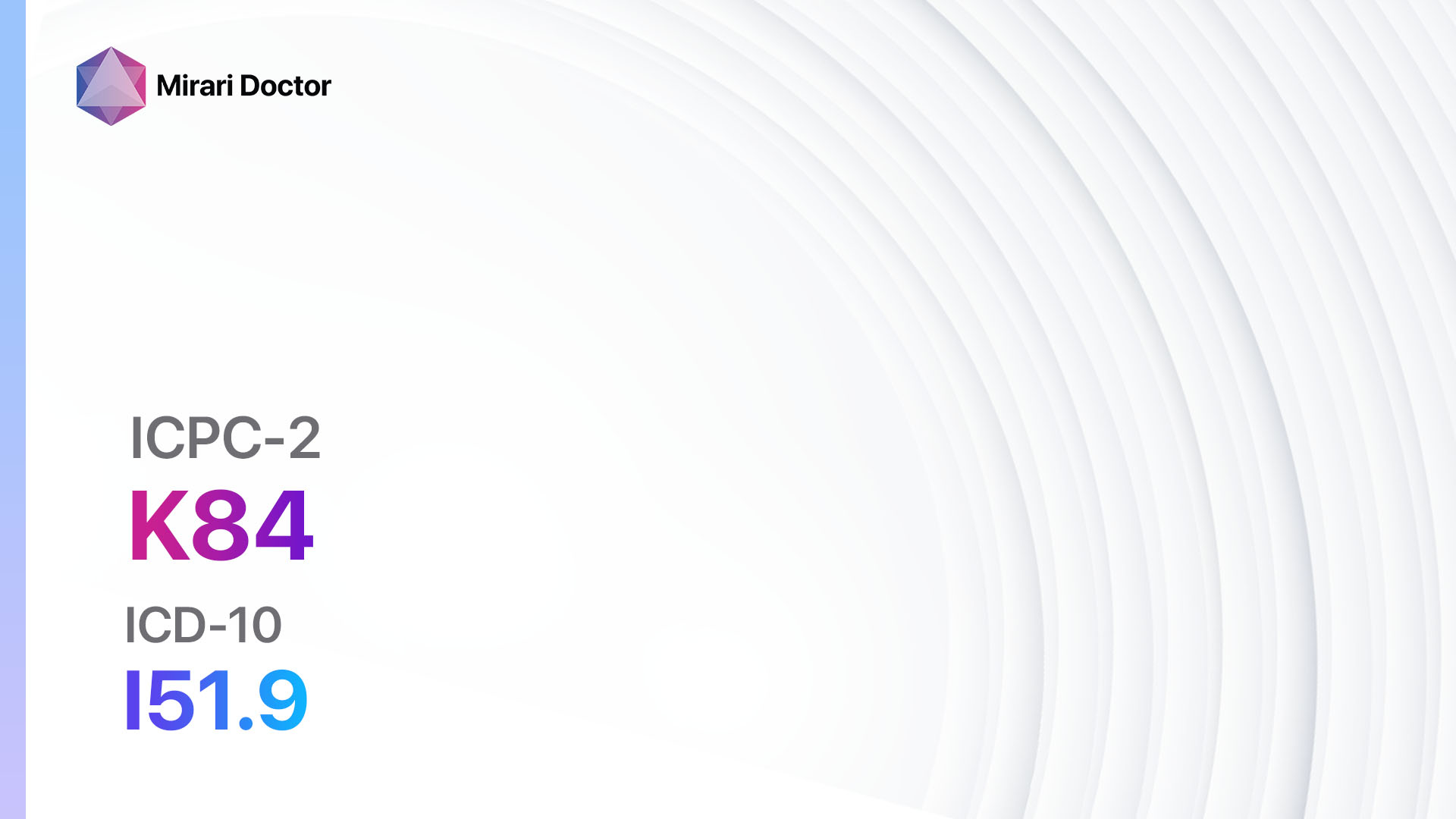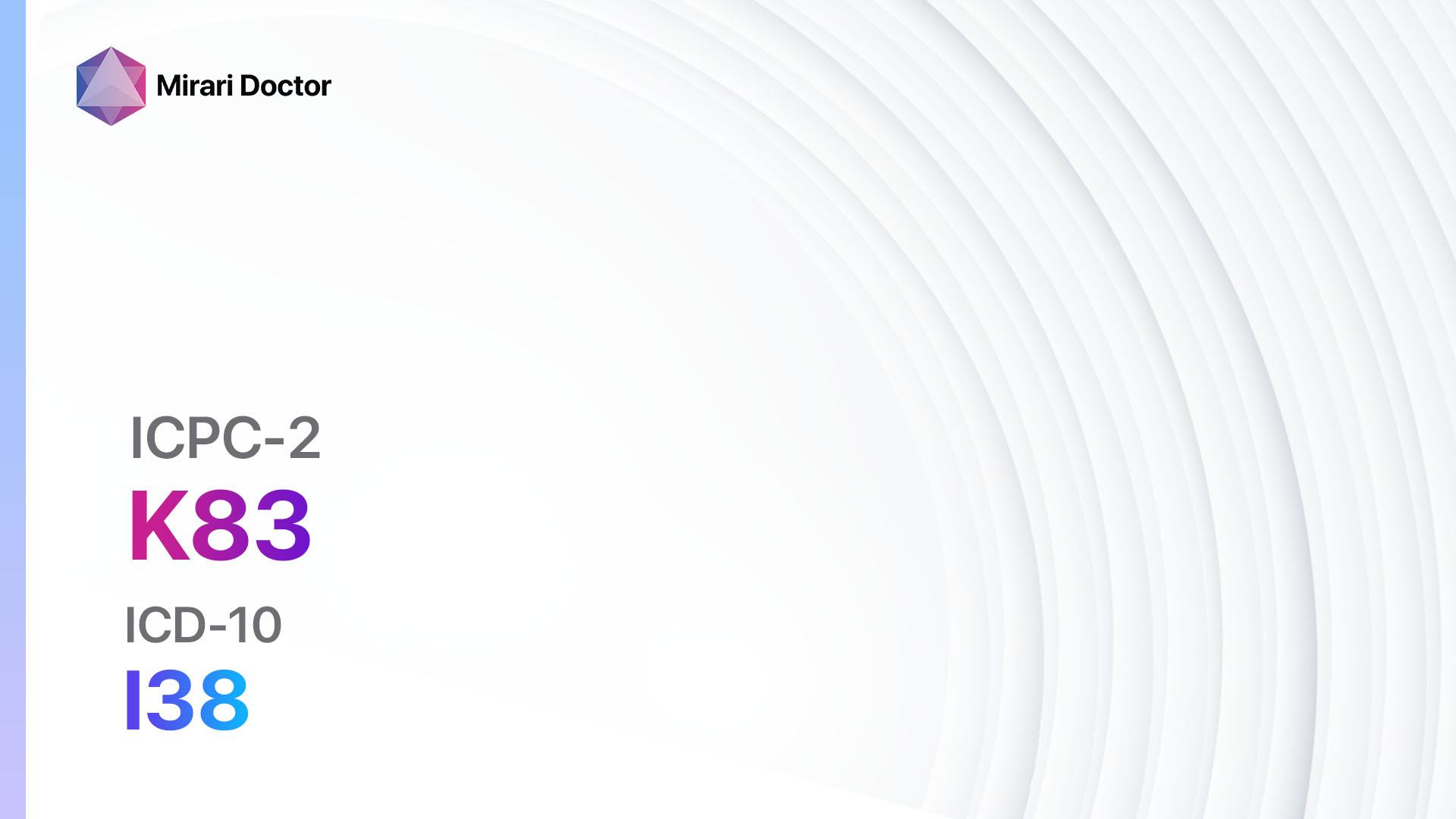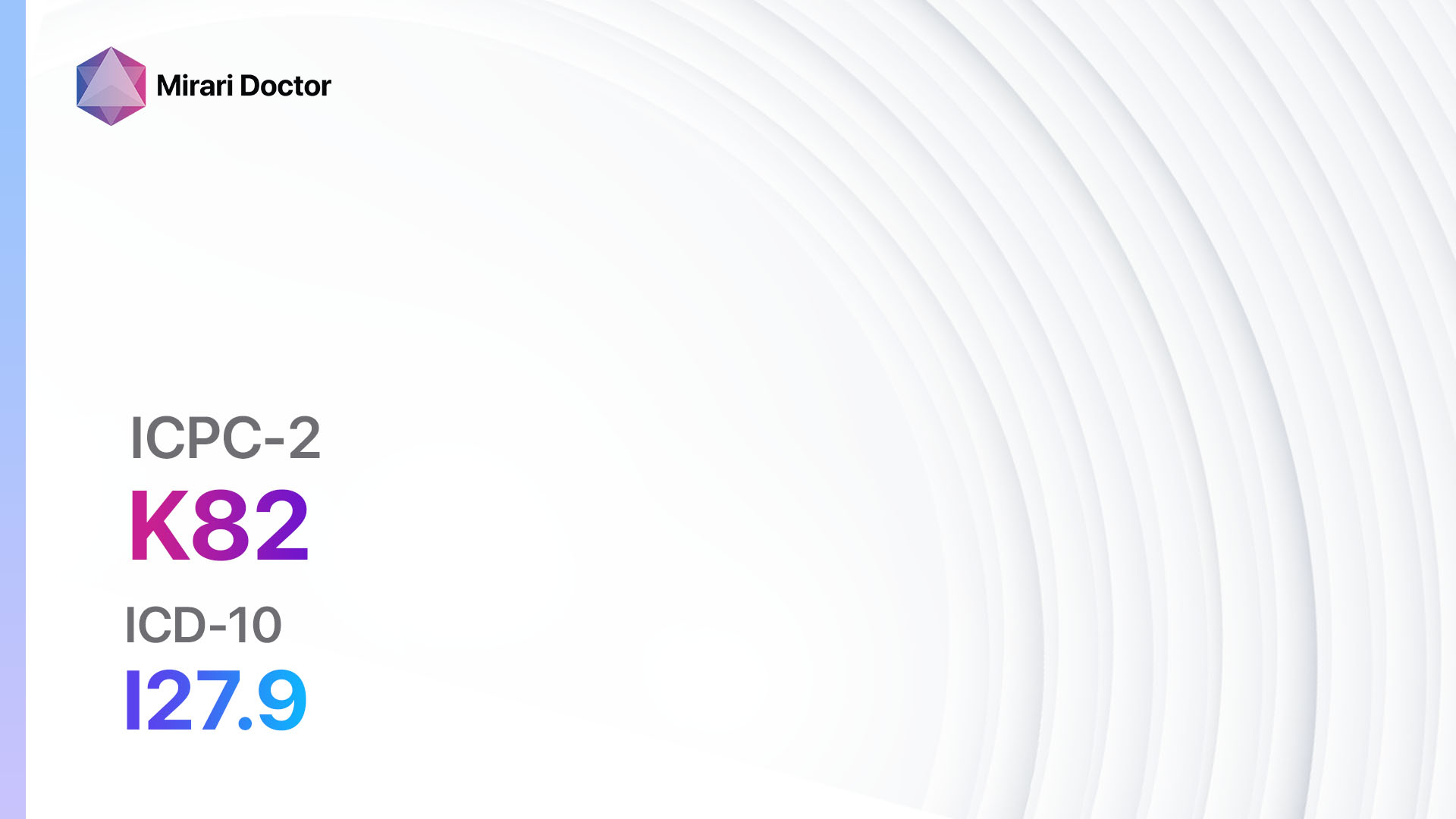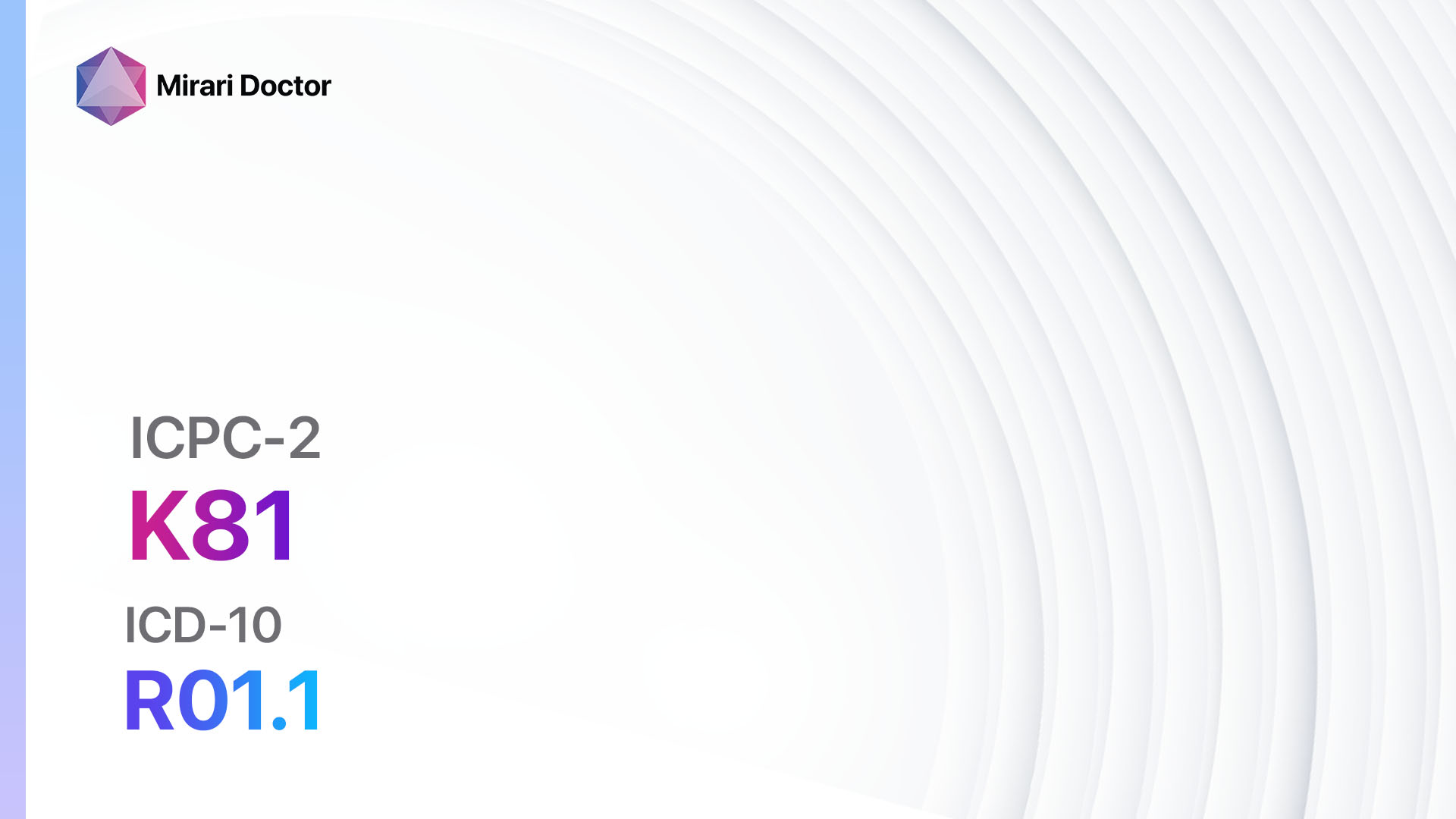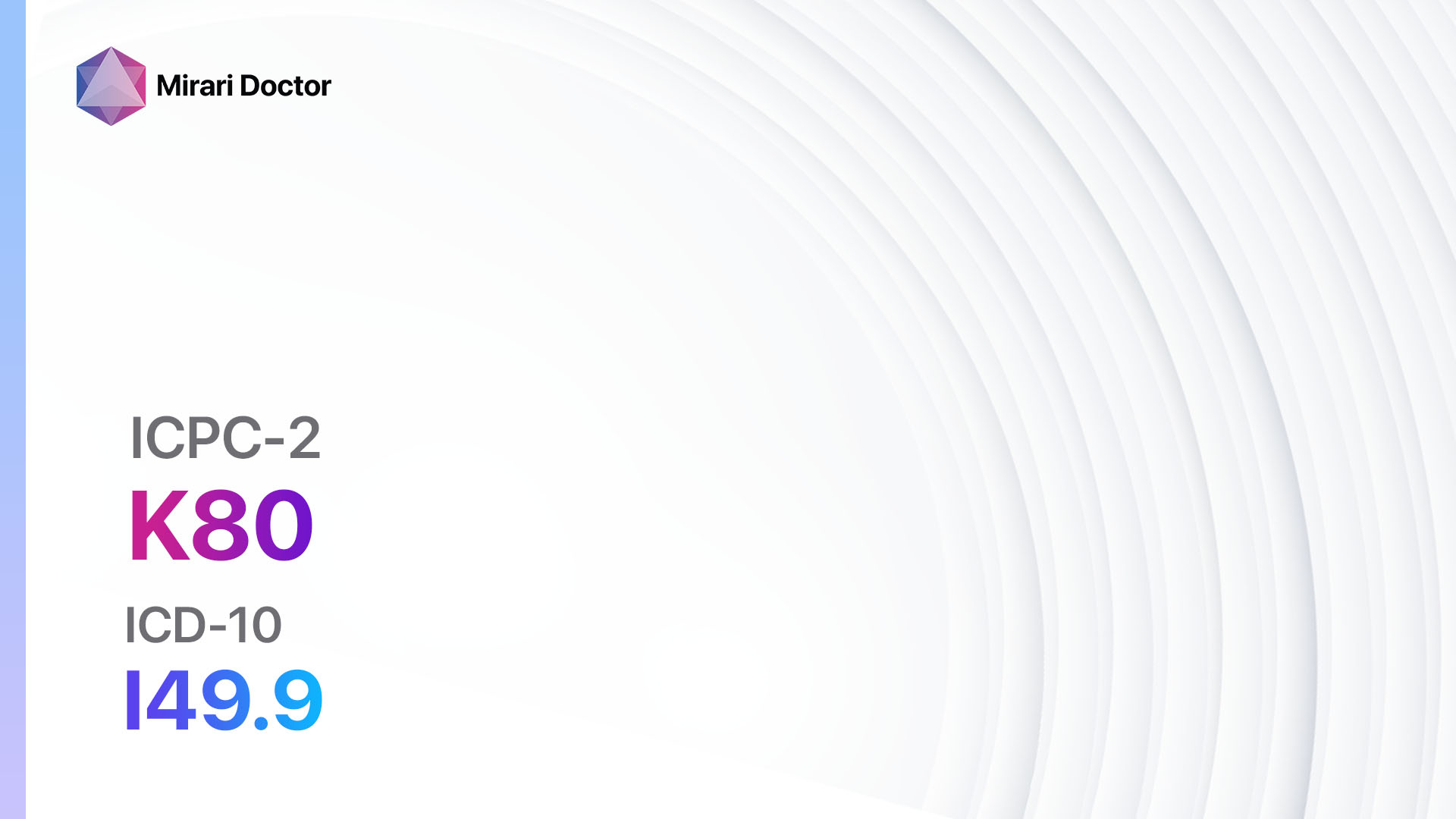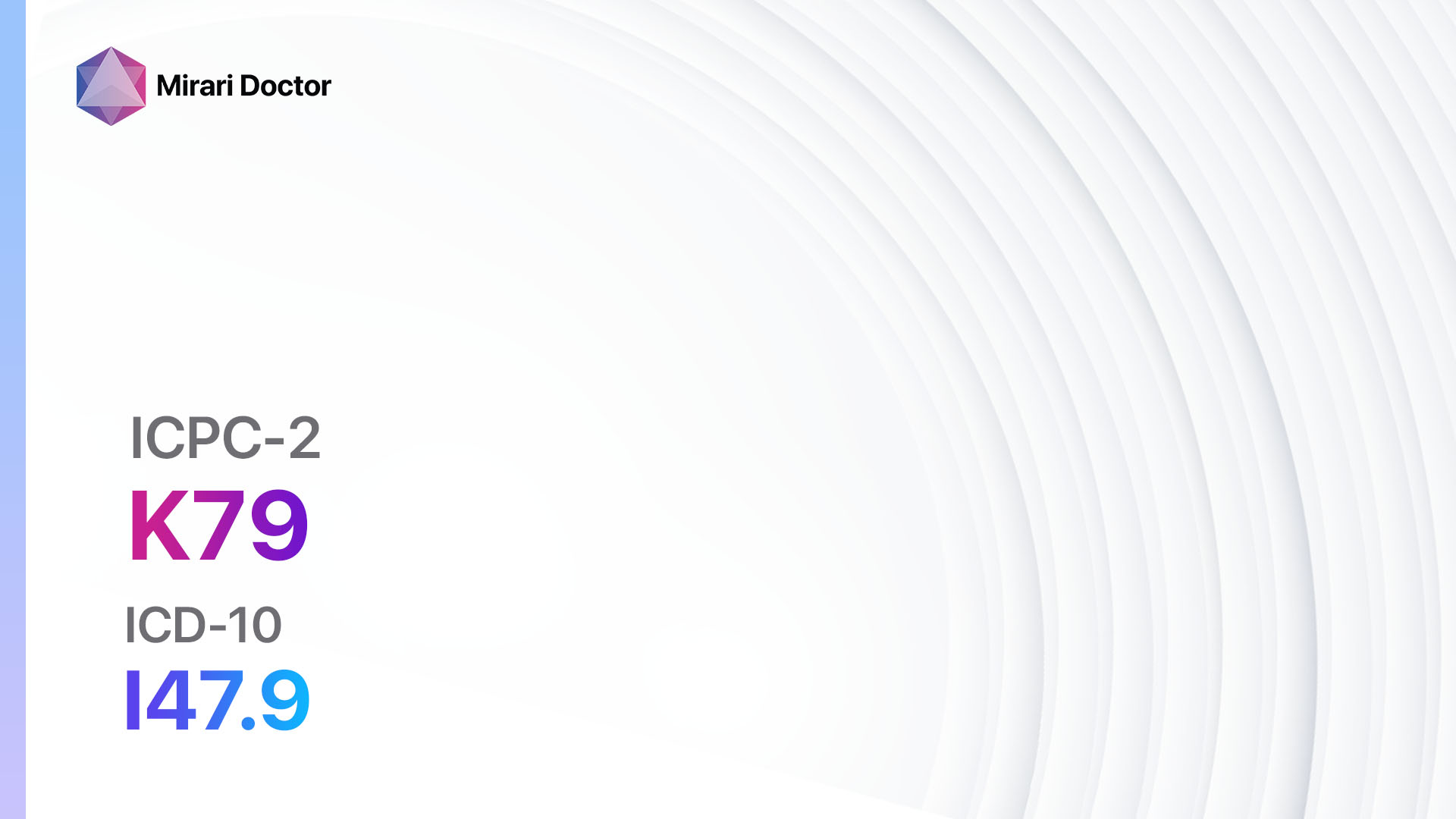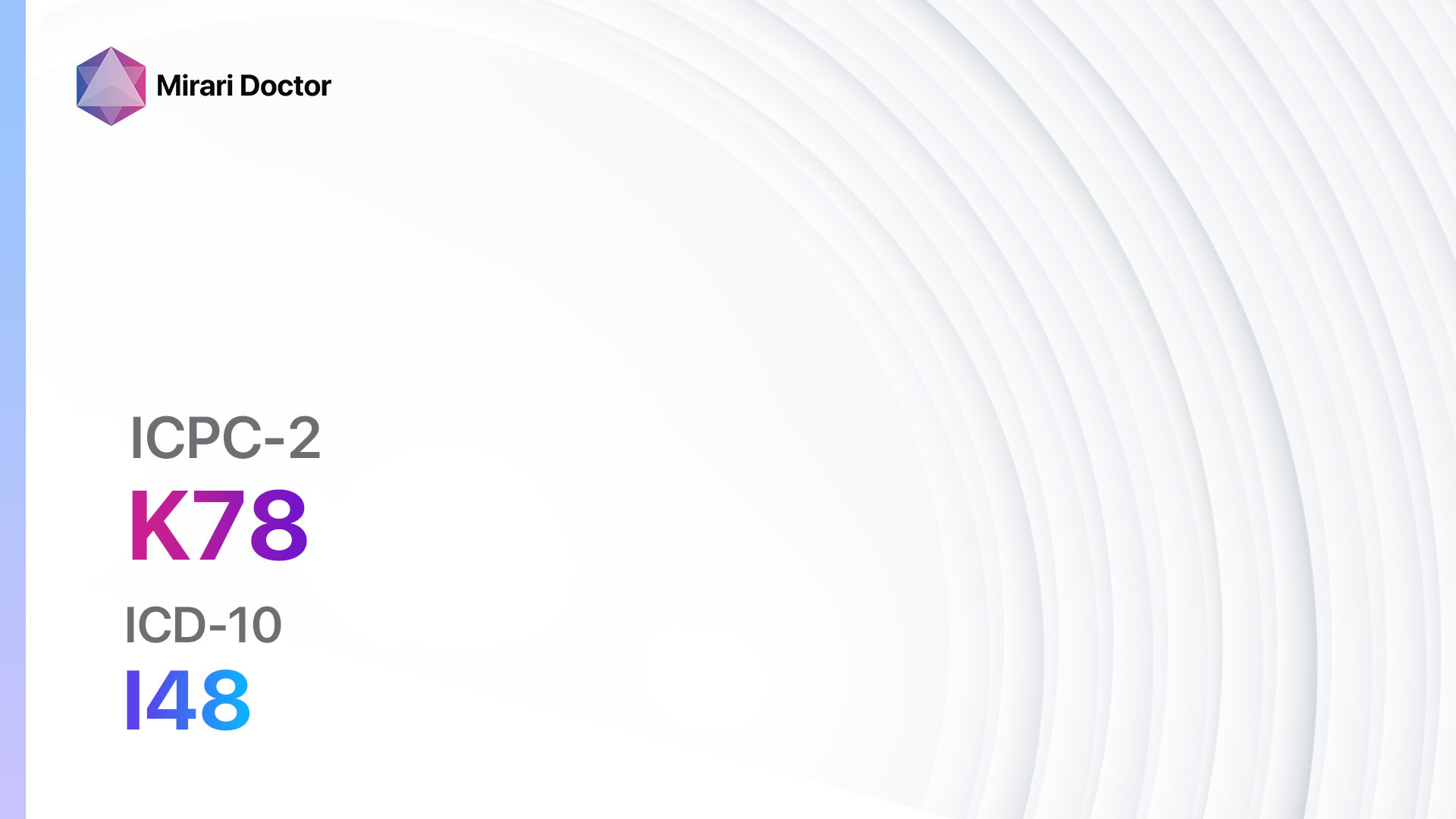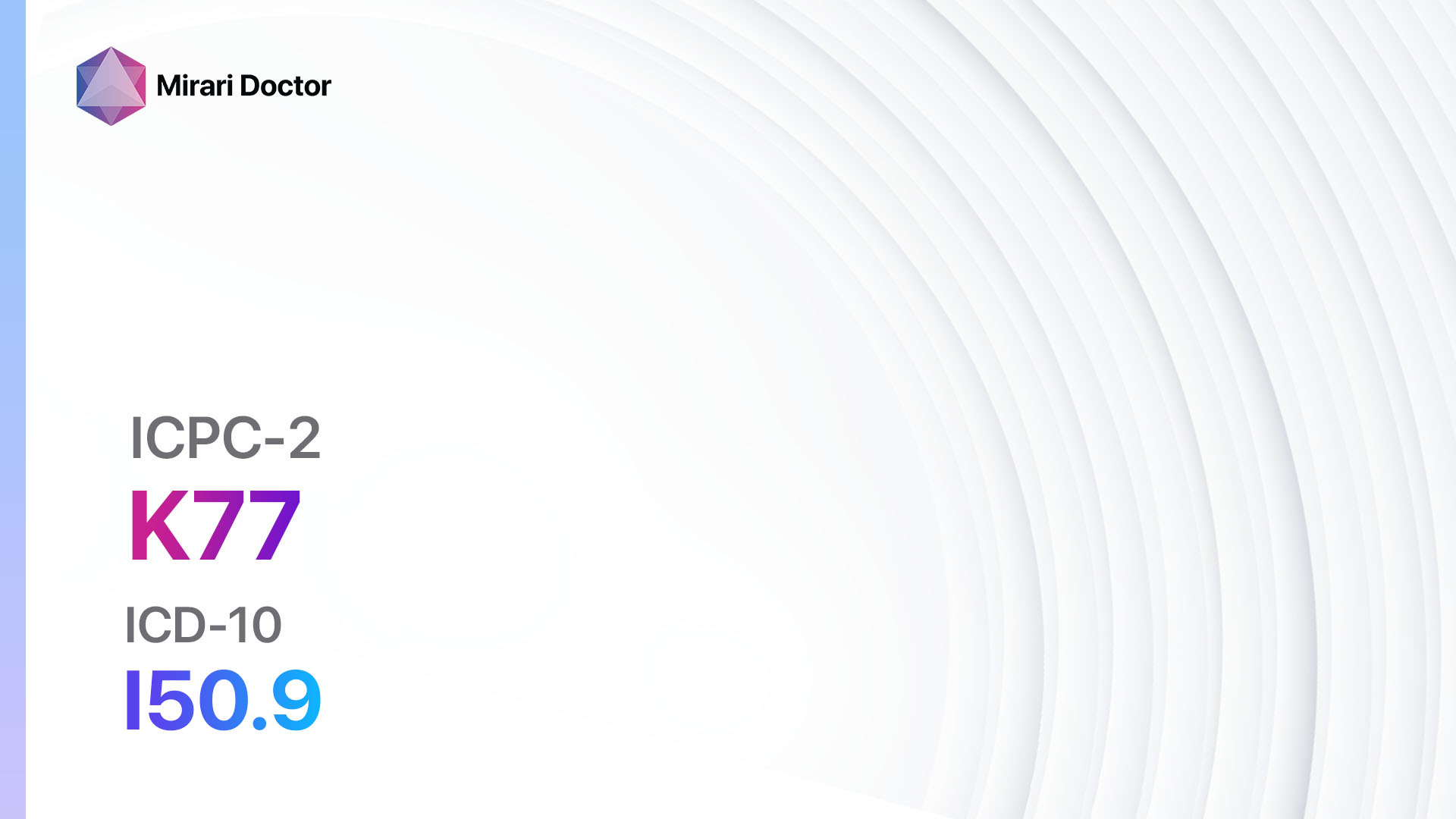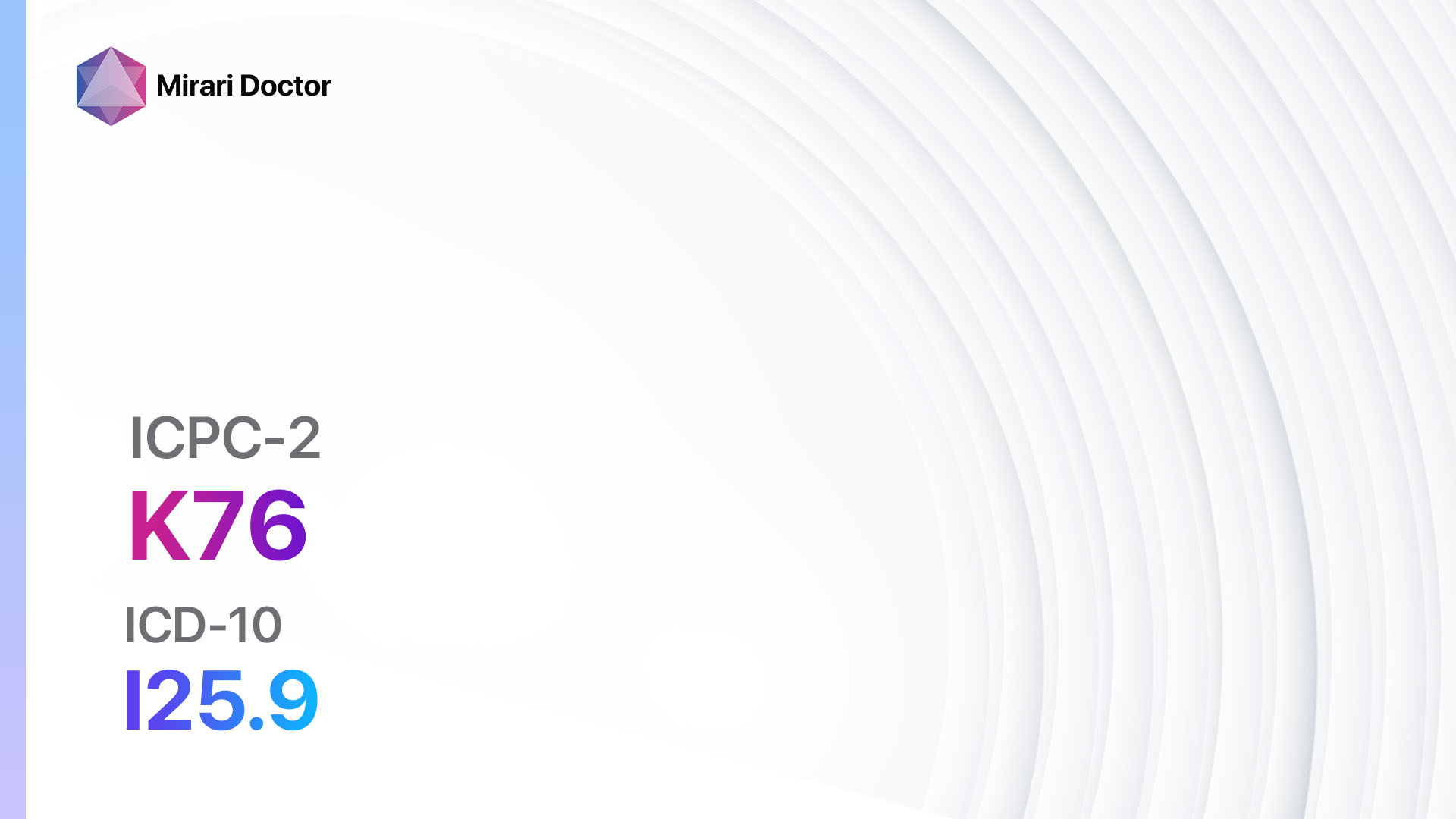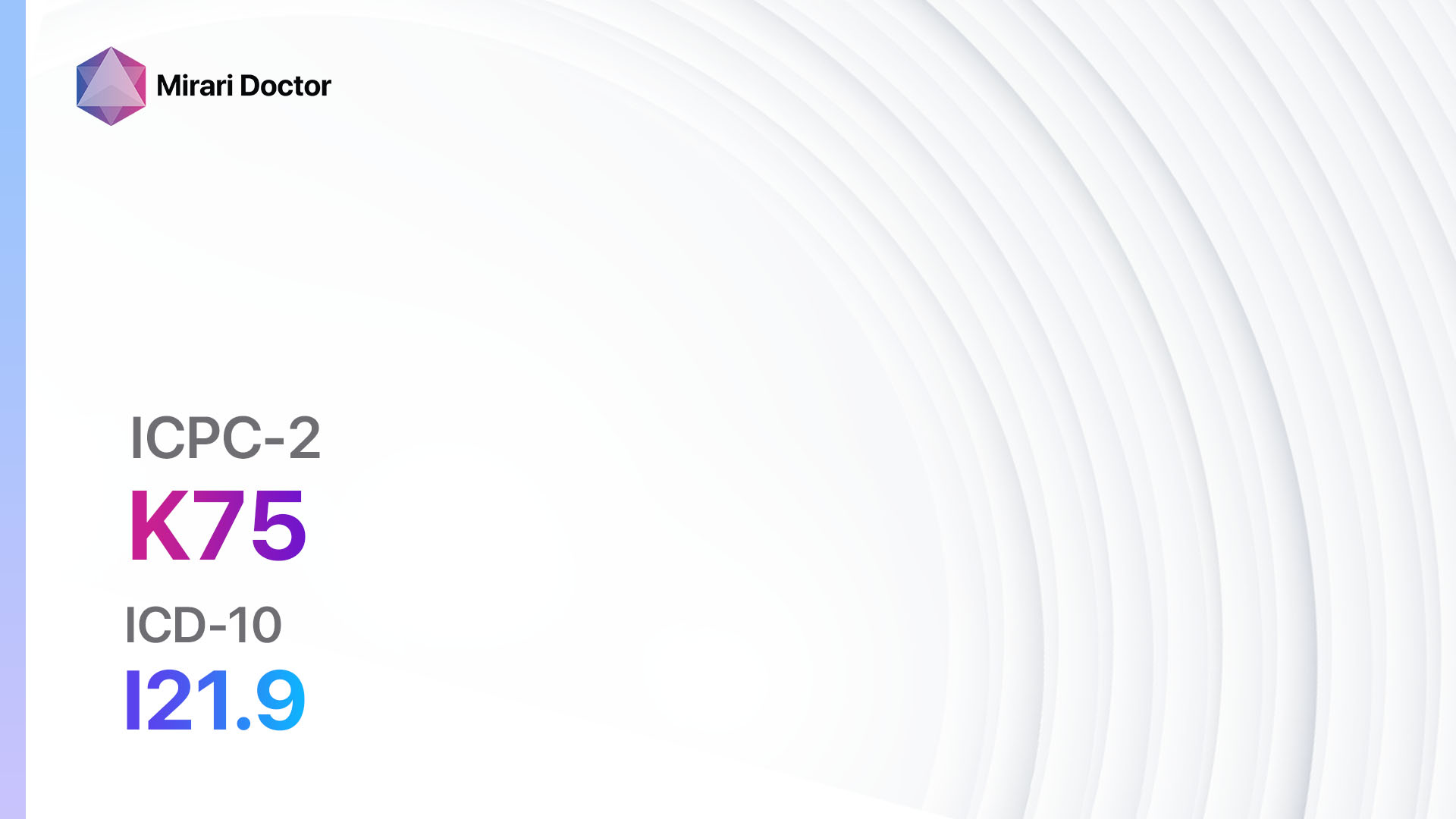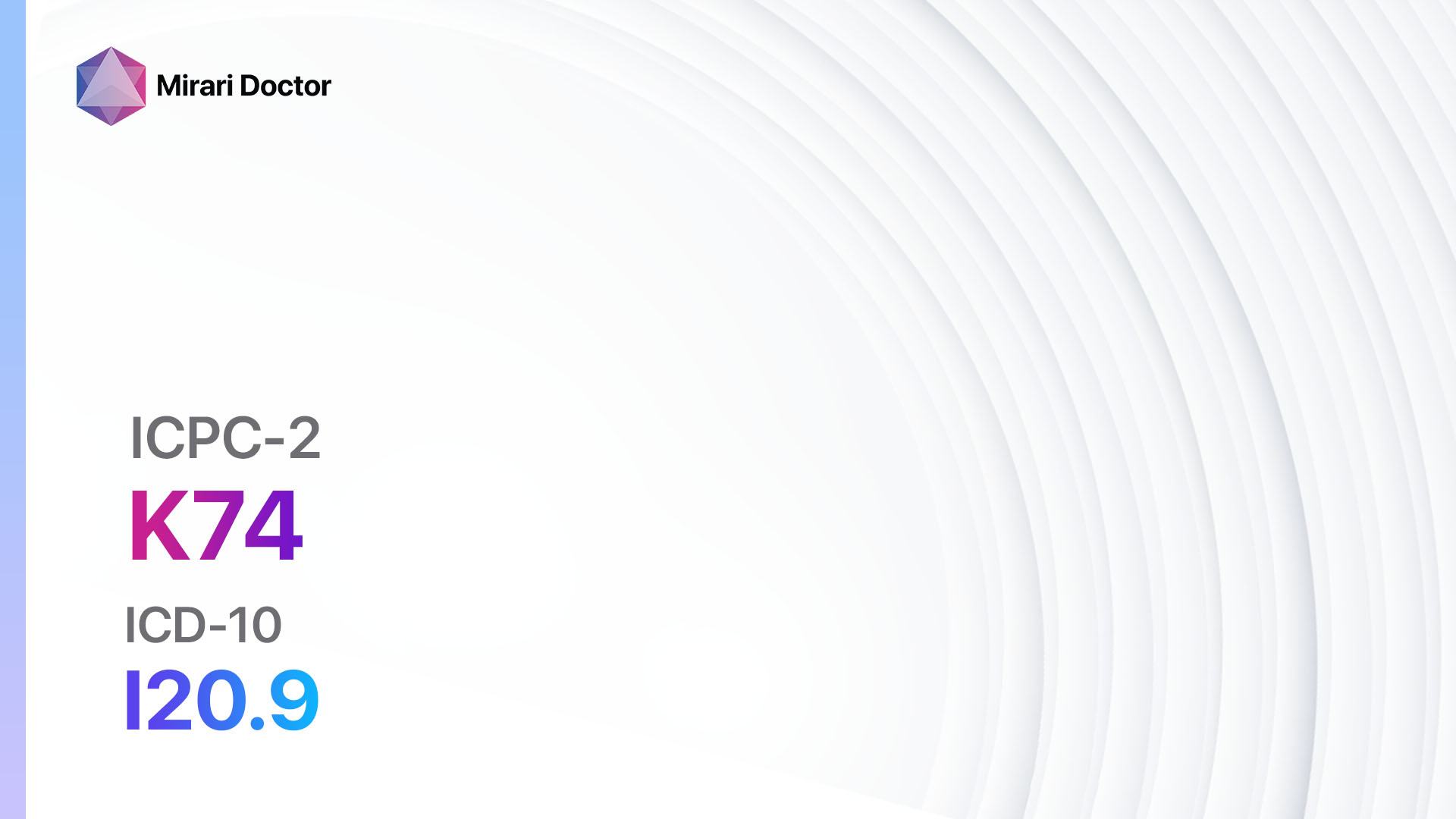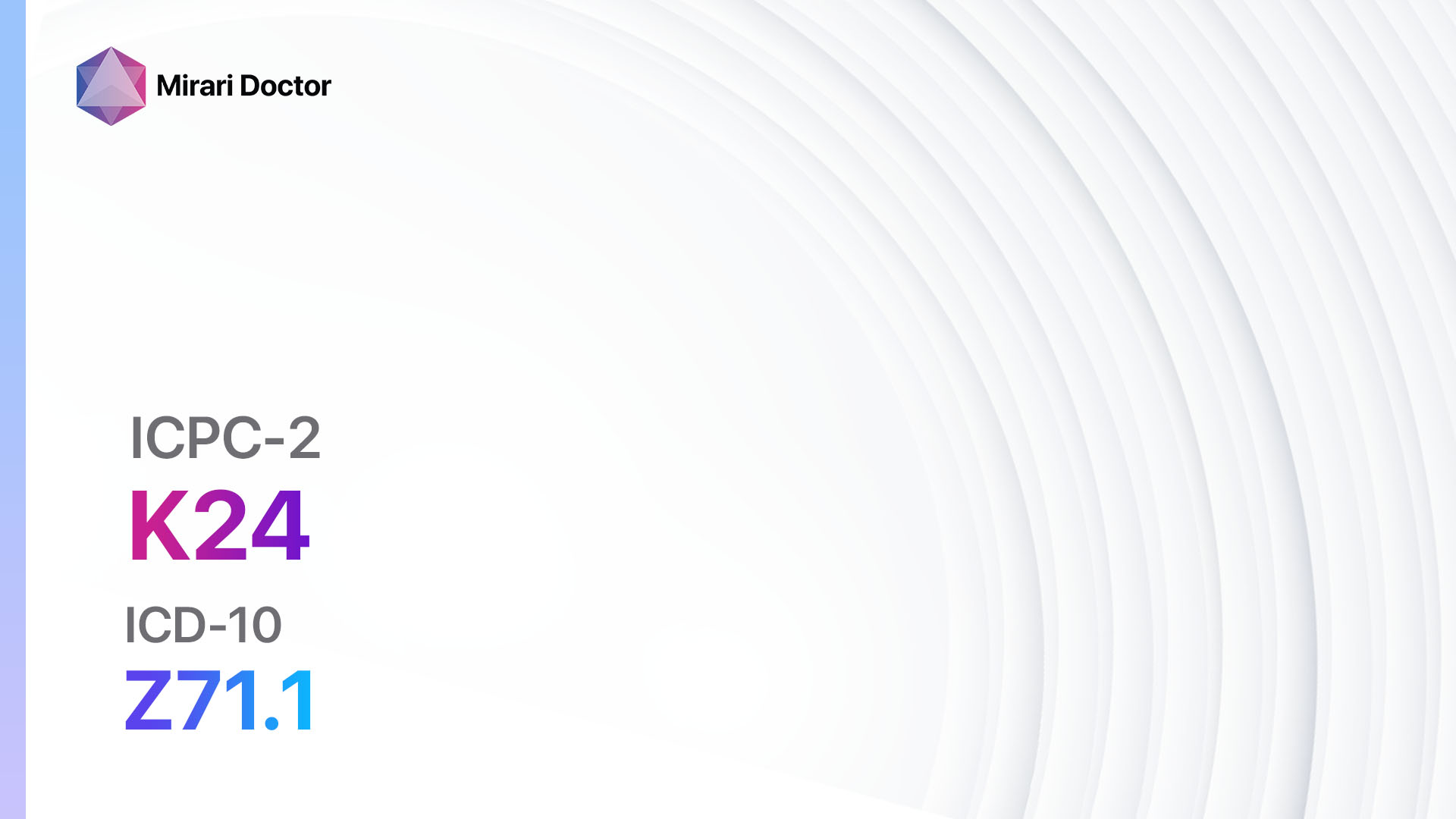
Introduction
Heart disease is a significant health concern that affects millions of people worldwide. It is important to address the fear of heart disease as it can lead to increased stress and anxiety, which can negatively impact a person’s overall well-being. The aim of this guide is to provide a comprehensive overview of the symptoms, causes, diagnostic steps, possible interventions, and lifestyle modifications that can help alleviate the fear of heart disease.[1][2]
Codes
- ICPC-2 Code: K24 Fear of heart disease[3]
- ICD-10 Code: Z71.1 Person with feared complaint in whom no diagnosis is made[4][5]
Symptoms
- Chest pain or discomfort[6]
- Shortness of breath[7]
- Fatigue[8]
- Rapid or irregular heartbeat[9]
- Dizziness or lightheadedness[10]
- Swelling in the legs, ankles, or feet
These symptoms may vary based on the stage and subtype of heart disease.
Causes
- High blood pressure
- High cholesterol levels
- Smoking
- Obesity
- Diabetes
- Family history of heart disease
These are some of the potential causes of heart disease. It is important to note that multiple factors can contribute to the development of heart disease.
Diagnostic Steps
Medical History
- Gather information about the patient’s risk factors, such as smoking, obesity, and family history of heart disease.
- Inquire about any existing medical conditions, such as high blood pressure or diabetes.
- Assess the patient’s symptoms related to heart disease, such as chest pain or shortness of breath.
Physical Examination
- Measure blood pressure and heart rate.
- Listen to the heart and lungs for any abnormal sounds.
- Check for signs of fluid retention, such as swelling in the legs or ankles.
Laboratory Tests
- Lipid profile: Measures the levels of cholesterol and triglycerides in the blood.
- Fasting blood glucose: Determines if the patient has diabetes or prediabetes.
- Complete blood count: Checks for any abnormalities in blood cell counts.
- C-reactive protein (CRP): Assesses inflammation in the body, which can be a risk factor for heart disease.
- Thyroid function tests: Evaluates thyroid hormone levels, as imbalances can contribute to heart disease.
Diagnostic Imaging
- Electrocardiogram (ECG): Records the electrical activity of the heart to detect any abnormalities.
- Echocardiogram: Uses sound waves to create images of the heart’s structure and function.
- Stress test: Evaluates the heart’s response to physical exertion.
- Coronary angiography: Invasive procedure that uses dye and X-rays to visualize the coronary arteries.
Other Tests
- Cardiac CT scan: Provides detailed images of the heart and blood vessels.
- Cardiac MRI: Uses magnetic fields and radio waves to create images of the heart.
- Genetic testing: Identifies any genetic mutations that may increase the risk of heart disease.
Follow-up and Patient Education
- Schedule regular follow-up appointments to monitor the patient’s progress and address any concerns.
- Provide educational materials and resources to help the patient understand heart disease and its management.
- Encourage lifestyle modifications and adherence to prescribed interventions.
Possible Interventions
Traditional Interventions
Medications:
Top 5 drugs for heart disease:
- Statins (e.g., Atorvastatin, Simvastatin, Rosuvastatin):
- Cost: Generic versions can be $3-$50/month.
- Contraindications: Active liver disease, hypersensitivity.
- Side effects: Muscle pain, diarrhea, upset stomach.
- Severe side effects: Rhabdomyolysis, liver damage.
- Drug interactions: Grapefruit juice, other cholesterol-lowering agents.
- Warning: Regular liver function tests required.
- Antiplatelet agents (e.g., Clopidogrel, Aspirin):
- Cost: Aspirin is inexpensive (<$10/month). Clopidogrel is $10-$100/month for generic.
- Contraindications: Active bleeding, peptic ulcer disease.
- Side effects: Upset stomach, bleeding.
- Severe side effects: Severe bleeding, allergic reactions.
- Drug interactions: NSAIDs, other blood thinners.
- Warning: Risk of bleeding.
- ACE inhibitors (e.g., Ramipril, Lisinopril):
- Cost: Generics can be $10-$50/month.
- Contraindications: History of angioedema with ACE inhibitors, renal artery stenosis.
- Side effects: Cough, elevated blood urea nitrogen.
- Severe side effects: Angioedema, hyperkalemia.
- Drug interactions: Potassium supplements, NSAIDs.
- Warning: Monitoring of renal function and potassium is required.
- Beta-blockers (e.g., Metoprolol, Atenolol):
- Cost: Generic versions are typically <$30/month.
- Contraindications: Severe bradycardia, uncontrolled heart failure.
- Side effects: Fatigue, dizziness, bradycardia.
- Severe side effects: Bronchospasm, heart block.
- Drug interactions: Calcium channel blockers, insulin.
- Warning: Should not be abruptly stopped.
- Angiotensin receptor blockers (e.g., Losartan, Valsartan):
- Cost: Generics can be $10-$50/month.
- Contraindications: History of angioedema with ACE inhibitors, renal artery stenosis.
- Side effects: Dizziness, fatigue, cough.
- Severe side effects: Angioedema, hyperkalemia.
- Drug interactions: Potassium supplements, NSAIDs.
- Warning: Monitoring of renal function and potassium is required.
Alternative Drugs:
- Calcium channel blockers (e.g., Amlodipine): Used to relax blood vessels and lower blood pressure.
- Diuretics (e.g., Hydrochlorothiazide): Help eliminate excess fluid and reduce blood pressure.
- Nitroglycerin: Relieves chest pain by relaxing and widening blood vessels.
- Anti-anxiety medications (e.g., Alprazolam, Diazepam): May be prescribed to manage anxiety related to heart disease.
- Antidepressants (e.g., Sertraline, Escitalopram): Can help manage depression and anxiety associated with heart disease.
Surgical Procedures:
- Angioplasty and stent placement: A catheter is used to place a stent to open up narrowed arteries. Cost: $15,000 to $50,000.
- Coronary artery bypass surgery (CABG): Redirects blood around blocked or narrowed coronary arteries. Cost: $70,000 to $200,000.
Alternative Interventions
- Acupuncture: May help reduce stress and anxiety. Cost: $60-$120 per session.
- Yoga and meditation: Can help promote relaxation and reduce stress. Cost: Varies depending on the class or instructor.
- Herbal supplements: Some herbs, such as hawthorn and garlic, may have potential benefits for heart health. Cost: Varies depending on the specific supplement.
- Mindfulness-based stress reduction: A program that combines meditation, yoga, and mind-body exercises. Cost: $300-$600 for an 8-week program.
- Massage therapy: Can help promote relaxation and reduce muscle tension. Cost: $50-$100 per session.
Lifestyle Interventions
- Regular exercise: Aim for at least 150 minutes of moderate-intensity aerobic activity or 75 minutes of vigorous-intensity activity per week.
- Healthy diet: Emphasize fruits, vegetables, whole grains, lean proteins, and healthy fats. Limit sodium, saturated fats, and added sugars.
- Smoking cessation: Quit smoking to reduce the risk of heart disease.
- Weight management: Maintain a healthy weight through a balanced diet and regular physical activity.
- Stress management: Practice stress-reducing techniques, such as deep breathing, meditation, or engaging in hobbies.
It is important to note that the cost ranges provided are approximate and may vary depending on the location and availability of the interventions. It is recommended to consult with healthcare professionals for personalized recommendations and cost estimates.
Mirari Cold Plasma Alternative Intervention
Understanding Mirari Cold Plasma
- Safe and Non-Invasive Treatment: Mirari Cold Plasma is a safe and non-invasive treatment option for various skin conditions. It does not require incisions, minimizing the risk of scarring, bleeding, or tissue damage.
- Efficient Extraction of Foreign Bodies: Mirari Cold Plasma facilitates the removal of foreign bodies from the skin by degrading and dissociating organic matter, allowing easier access and extraction.
- Pain Reduction and Comfort: Mirari Cold Plasma has a local analgesic effect, providing pain relief during the treatment, making it more comfortable for the patient.
- Reduced Risk of Infection: Mirari Cold Plasma has antimicrobial properties, effectively killing bacteria and reducing the risk of infection.
- Accelerated Healing and Minimal Scarring: Mirari Cold Plasma stimulates wound healing and tissue regeneration, reducing healing time and minimizing the formation of scars.
Mirari Cold Plasma Prescription
Video instructions for using Mirari Cold Plasma Device – K24 Fear of heart disease (ICD-10:Z71.1)
| Mild | Moderate | Severe |
| Mode setting: 1 (Infection) Location: 5 (Lungs) Morning: 15 minutes, Evening: 15 minutes |
Mode setting: 1 (Infection) Location: 5 (Lungs) Morning: 30 minutes, Lunch: 30 minutes, Evening: 30 minutes |
Mode setting: 1 (Infection) Location: 5 (Lungs) Morning: 30 minutes, Lunch: 30 minutes, Evening: 30 minutes |
| Mode setting: 2 (Wound Healing) Location: 5 (Lungs) Morning: 15 minutes, Evening: 15 minutes |
Mode setting: 2 (Wound Healing) Location: 5 (Lungs) Morning: 30 minutes, Lunch: 30 minutes, Evening: 30 minutes |
Mode setting: 2 (Wound Healing) Location: 5 (Lungs) Morning: 30 minutes, Lunch: 30 minutes, Evening: 30 minutes |
| Mode setting: 7 (Immunotherapy) Location: 1 (Sacrum) Morning: 15 minutes, Evening: 15 minutes |
Mode setting: 7 (Immunotherapy) Location: 1 (Sacrum) Morning: 30 minutes, Lunch: 30 minutes, Evening: 30 minutes |
Mode setting: 7 (Immunotherapy) Location: 1 (Sacrum) Morning: 30 minutes, Lunch: 30 minutes, Evening: 30 minutes |
| Mode setting: 7 (Immunotherapy) Location: 4 (Heart, Bile & Pancreas) Morning: 15 minutes, Evening: 15 minutes |
Mode setting: 7 (Immunotherapy) Location: 4 (Heart, Bile & Pancreas) Morning: 30 minutes, Lunch: 30 minutes, Evening: 30 minutes |
Mode setting:7 (Immunotherapy) Location: 4 (Heart, Bile & Pancreas) Morning: 30 minutes, Lunch: 30 minutes, Evening: 30 minutes |
| Total Morning: 60 minutes approx. $10 USD, Evening: 60 minutes approx. $10 USD |
Total Morning: 120 minutes approx. $20 USD, Lunch: 120 minutes approx. $20 USD, Evening: 120 minutes approx. $20 USD, |
Total Morning: 120 minutes approx. $20 USD, Lunch: 120 minutes approx. $20 USD, Evening: 120 minutes approx. $20 USD, |
| Usual treatment for 7-60 days approx. $140 USD – $1200 USD | Usual treatment for 6-8 weeks approx. $2,520 USD – $3,360 USD |
Usual treatment for 3-6 months approx. $5,400 USD – $10,800 USD
|
 |
|
Use the Mirari Cold Plasma device to treat Fear of heart disease effectively.
WARNING: MIRARI COLD PLASMA IS DESIGNED FOR THE HUMAN BODY WITHOUT ANY ARTIFICIAL OR THIRD PARTY PRODUCTS. USE OF OTHER PRODUCTS IN COMBINATION WITH MIRARI COLD PLASMA MAY CAUSE UNPREDICTABLE EFFECTS, HARM OR INJURY. PLEASE CONSULT A MEDICAL PROFESSIONAL BEFORE COMBINING ANY OTHER PRODUCTS WITH USE OF MIRARI.
Step 1: Cleanse the Skin
- Start by cleaning the affected area of the skin with a gentle cleanser or mild soap and water. Gently pat the area dry with a clean towel.
Step 2: Prepare the Mirari Cold Plasma device
- Ensure that the Mirari Cold Plasma device is fully charged or has fresh batteries as per the manufacturer’s instructions. Make sure the device is clean and in good working condition.
- Switch on the Mirari device using the power button or by following the specific instructions provided with the device.
- Some Mirari devices may have adjustable settings for intensity or treatment duration. Follow the manufacturer’s instructions to select the appropriate settings based on your needs and the recommended guidelines.
Step 3: Apply the Device
- Place the Mirari device in direct contact with the affected area of the skin. Gently glide or hold the device over the skin surface, ensuring even coverage of the area experiencing.
- Slowly move the Mirari device in a circular motion or follow a specific pattern as indicated in the user manual. This helps ensure thorough treatment coverage.
Step 4: Monitor and Assess:
- Keep track of your progress and evaluate the effectiveness of the Mirari device in managing your Fear of heart disease. If you have any concerns or notice any adverse reactions, consult with your health care professional.
Note
This guide is for informational purposes only and should not replace the advice of a medical professional. Always consult with your healthcare provider or a qualified medical professional for personal advice, diagnosis, or treatment. Do not solely rely on the information presented here for decisions about your health. Use of this information is at your own risk. The authors of this guide, nor any associated entities or platforms, are not responsible for any potential adverse effects or outcomes based on the content.
Mirari Cold Plasma System Disclaimer
- Purpose: The Mirari Cold Plasma System is a Class 2 medical device designed for use by trained healthcare professionals. It is registered for use in Thailand and Vietnam. It is not intended for use outside of these locations.
- Informational Use: The content and information provided with the device are for educational and informational purposes only. They are not a substitute for professional medical advice or care.
- Variable Outcomes: While the device is approved for specific uses, individual outcomes can differ. We do not assert or guarantee specific medical outcomes.
- Consultation: Prior to utilizing the device or making decisions based on its content, it is essential to consult with a Certified Mirari Tele-Therapist and your medical healthcare provider regarding specific protocols.
- Liability: By using this device, users are acknowledging and accepting all potential risks. Neither the manufacturer nor the distributor will be held accountable for any adverse reactions, injuries, or damages stemming from its use.
- Geographical Availability: This device has received approval for designated purposes by the Thai and Vietnam FDA. As of now, outside of Thailand and Vietnam, the Mirari Cold Plasma System is not available for purchase or use.
References
- Centers for Disease Control and Prevention. (2023). Heart Disease Facts. Retrieved from https://www.cdc.gov/heartdisease/facts.htm
- American Heart Association. (2023). What is Cardiovascular Disease? Retrieved from https://www.heart.org/en/health-topics/consumer-healthcare/what-is-cardiovascular-disease
- World Health Organization. (2022). International Classification of Primary Care, Second edition (ICPC-2). Retrieved from https://www.who.int/standards/classifications/other-classifications/international-classification-of-primary-care
- Centers for Medicare & Medicaid Services. (2023). ICD-10-CM Official Coding Guidelines. Retrieved from https://www.cms.gov/medicare/icd-10/2023-icd-10-cm
- World Health Organization. (2022). International Statistical Classification of Diseases and Related Health Problems (ICD-10). Retrieved from https://www.who.int/standards/classifications/classification-of-diseases
- Mayo Clinic. (2023). Heart Disease. Retrieved from https://www.mayoclinic.org/diseases-conditions/heart-disease/symptoms-causes/syc-20353118
- American Heart Association. (2023). Warning Signs of Heart Failure. Retrieved from https://www.heart.org/en/health-topics/heart-failure/warning-signs-of-heart-failure
- Centers for Disease Control and Prevention. (2023). Heart Disease Symptoms, Risk Factors, and Complications. Retrieved from https://www.cdc.gov/heartdisease/symptoms.htm
- National Heart, Lung, and Blood Institute. (2023). Heart Arrhythmia. Retrieved from https://www.nhlbi.nih.gov/health-topics/arrhythmia
- American Heart Association. (2023). Dizziness and Lightheadedness. Retrieved from https://www.heart.org/en/health-topics/heart-attack/warning-signs-of-heart-attack/dizziness-and-lightheadedness
Related articles
Made in USA


